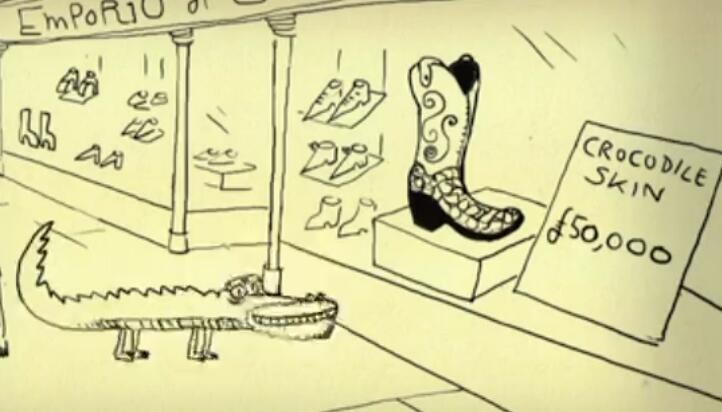60 Second Adventures in Economics—Number Three:The Phillips Curve.
《60秒經濟學探奇》第三節:菲利普斯曲線
Bill Phillips was a crocodile hunter and economist from New Zealand, who spotted that, when employment levels are high, wages rise faster—people have more money to spend, so prices go up and so does inflation.
比爾·菲利普斯是新西蘭鱷魚獵手和經濟學家,他發現,就業率水平高時,工資增長更快,人們有更多錢花。
And likewise, when unemployment is high, the lack of money to spend means that inflation goes down. This became known as the Phillips Curve.
價格也會增加,通脹增加。相反,失業率高時,人們花的錢少,通脹減少。這被稱為菲利普斯曲線。

Governments even set policy by the curve, tolerating the inflation when they spent extra money creating jobs.
政府甚至根據曲線制定政策,在花更多錢創造工作機會時容忍通脹。
But they forgot that the workers could also see the effects of the curve.
但政府忘了,工人們也能看到曲線的效果。
So, when unemployment went down, they expected inflation and demanded higher wages,
失業率下降后 他們預計會通脹并要求更高工資,
causing unemployment to go back up, while inflation remained high.
導致失業率回升,但通脹仍然保持高位。
Which is what happened in the 1970s when both inflation and unemployment rose.
這是1970年代通脹和失業率同時上升的情況。
Then in the 90s unemployment dropped while inflation stayed low, which all rather took the bend out of Phillips' curve.
然后90年代 失業率下降 通脹保持低位,這些情況都無法用菲利普斯曲線解釋。
But at least part of Phillips' troublesome trade-off lives on:
但至少,菲利普斯給出的討厭取舍關系部分還存在:
when faster growth and full employment return, you can bet inflation will be along to spoil the party.
高增長和高就業率時,你可以打賭,通脹會出來制造麻煩。












